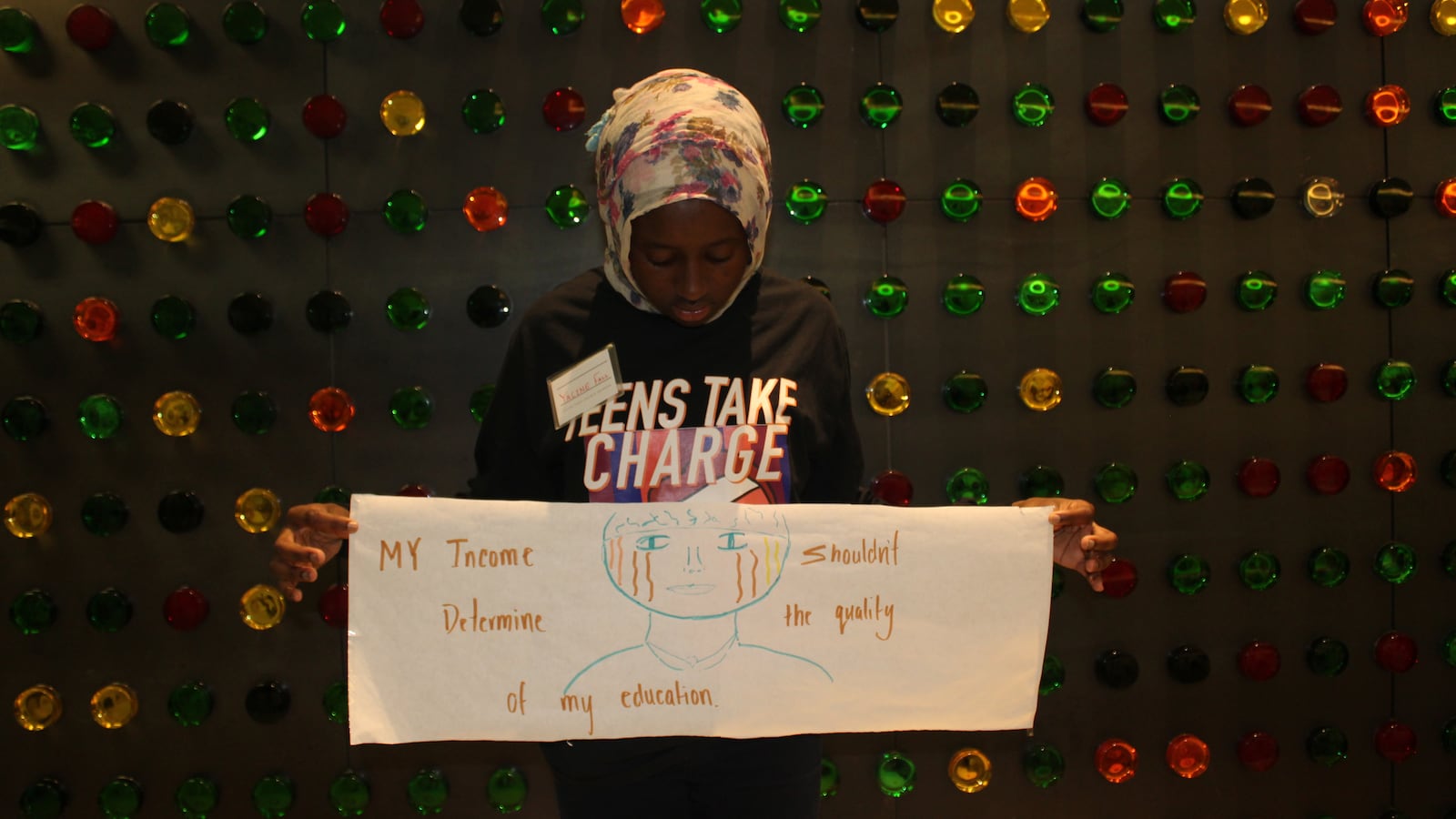When it comes to education issues, adults often do the talking. But for one evening, New York City students led a conversation on race, poverty, and immigration status — and the impact those have on their own schools.
A new group called Teens Take Charge recently invited high school students from across the city to read their open letters about what it’s like to learn in a segregated school system. The group is working with the creators of a new podcast called The Bell, to share their stories. For now, here’s one of the letters, edited for length, presented at the “To Whom it Should Concern” open-mic event.
Yacine Fall, age 17, senior at Beacon High School
I live in the center of Harlem, where I attended middle school, but now I go to an elite public high school in Midtown. Two different worlds. Only five miles apart.
I was one of few students in my middle school to go through the entire high school catalog to find a high school outside of my neighborhood with more resources. I didn’t realize that an A in Harlem was not the same as an A in a majority-white high school on the Upper West Side. I had to go through this process on my own as a low-income child of immigrants who did not understand the American education system.
I go to a school where most students are white, and I wonder how I made it there despite living in a neighborhood where opportunity is slight. Where teachers only stay in schools for two years before deciding they’ve had enough. Where poverty is high and expectations are low. And I cannot help but think: What made it this way? What happened in five miles that determined who got to graduate, who went to college, who got to explore their talents, who learned to question?
I was a black girl who was the daughter of immigrants. Education was my only hope for redefining my life. But it seemed like the bar was always set out of reach for people like me, and most of our time was spent elevating ourselves to reach the bar instead of figuring out how to surpass it. It was remarkable that I “beat the odds.” I thought I’d find greener grass, but instead I was introduced to an elite education system that had no space for me.
I walked into a school where my black and brown peers struggled to stay afloat and were barely passing their classes. I came into a school where we were made to leave our identities and struggles out of the classroom. My elite school thought diversity ended when you put black and white students together and did not create a space for us to learn from those identities. No one told me about the rooms and spaces I would need to create for myself in order to survive.

